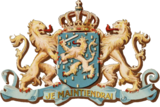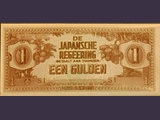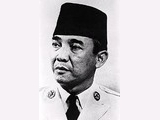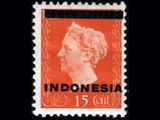Amateur Radio from ex-DXCC Dutch (Netherlands) East India (= Indonesia)
Area and History
Continent: Asia/Oceania - Grid (Center): 6.0S 107.0O OI33 - Zones: ITU 51, 54 WAZ 28 - Allocations: Until 1968 PK, 1953-1960 JZ0 (Papua), 1965/66 8F (Indonesia), Since 1968 (Indonesia): JZA-JZZ, PKA-POZ, YBA-YHZ, 7AA-7IZ, 8AA-8IZ - IOTA various

![]() The Dutch East India Company (Vereenigde Oost-Indische Compagnie, VOC was a chartered company established in 1602, when the States-General of the Netherlands granted it a 21-year monopoly to carry out colonial activities in Asia. It was the first multinational corporation in the world and the first company to issue stock. It was also arguably the world's first megacorporation, possessing quasi-governmental powers, including the ability to wage war, negotiate treaties, coin money, and establish colonies. The Dutch East India Company remained an important trading concern for almost two centuries. In its declining years in the late 18th century it was referred to as Vergaan Onder Corruptie (referring to the acronym VOC) which translates as 'Perished By Corruption'. After the Fourth Anglo-Dutch War, the VOC was a financial wreck and was nationalised on 1 March 1796 by the new Batavian Republic. Its charter was renewed several times, but allowed to expire on 31 December 1800. Most of the possessions of the former VOC were subsequently occupied by Great Britain during the Napoleonic wars, but after the new United Kingdom of the Netherlands was created by the Congress of Vienna, some of these were restored to this successor state by the Anglo-Dutch Treaties of 1814 and 1824. There were numerous wars and disturbances across the archipelago as various indigenous Indonesian groups resisted efforts to establish a Dutch hegemony, which weakened Dutch control and tied up its military forces. Disturbances continued to break out on both Java and Sumatra during the remainder of the 19th century. Dutch economic strategy for the colony during the eighteenth and nineteenth centuries can be defined along three overlapping periods: the Cultivation System, the Liberal Period, and the Ethical Period. Throughout these periods, and until Indonesian independence, the exploitation of Indonesia's wealth contributed to the industrialisation of the Netherlands. Large expanses of Java, for example, became plantations cultivated by Javanese peasants, collected by Chinese intermediaries, and sold on overseas markets by European merchants. Before World War II, the Dutch East Indies produced most of the world's supply of quinine and pepper, over a third of its rubber, a quarter of its coconut products, and a fifth of its tea, sugar, coffee, and oil. Indonesia made the Netherlands one of the world's most significant colonial powers.
The Dutch East India Company (Vereenigde Oost-Indische Compagnie, VOC was a chartered company established in 1602, when the States-General of the Netherlands granted it a 21-year monopoly to carry out colonial activities in Asia. It was the first multinational corporation in the world and the first company to issue stock. It was also arguably the world's first megacorporation, possessing quasi-governmental powers, including the ability to wage war, negotiate treaties, coin money, and establish colonies. The Dutch East India Company remained an important trading concern for almost two centuries. In its declining years in the late 18th century it was referred to as Vergaan Onder Corruptie (referring to the acronym VOC) which translates as 'Perished By Corruption'. After the Fourth Anglo-Dutch War, the VOC was a financial wreck and was nationalised on 1 March 1796 by the new Batavian Republic. Its charter was renewed several times, but allowed to expire on 31 December 1800. Most of the possessions of the former VOC were subsequently occupied by Great Britain during the Napoleonic wars, but after the new United Kingdom of the Netherlands was created by the Congress of Vienna, some of these were restored to this successor state by the Anglo-Dutch Treaties of 1814 and 1824. There were numerous wars and disturbances across the archipelago as various indigenous Indonesian groups resisted efforts to establish a Dutch hegemony, which weakened Dutch control and tied up its military forces. Disturbances continued to break out on both Java and Sumatra during the remainder of the 19th century. Dutch economic strategy for the colony during the eighteenth and nineteenth centuries can be defined along three overlapping periods: the Cultivation System, the Liberal Period, and the Ethical Period. Throughout these periods, and until Indonesian independence, the exploitation of Indonesia's wealth contributed to the industrialisation of the Netherlands. Large expanses of Java, for example, became plantations cultivated by Javanese peasants, collected by Chinese intermediaries, and sold on overseas markets by European merchants. Before World War II, the Dutch East Indies produced most of the world's supply of quinine and pepper, over a third of its rubber, a quarter of its coconut products, and a fifth of its tea, sugar, coffee, and oil. Indonesia made the Netherlands one of the world's most significant colonial powers.
The invasion and occupation during World War II brought about the destruction of the colonial state in Indonesia, as the Japanese removed as much of the Dutch state as they could, replacing it with their own regime. Following the Japanese surrender in August 1945, nationalist leaders Sukarno and Hatta declared Indonesian independence. A four and a half-year struggle followed as the Dutch tried to re-establish their colony. In December 1949, the Netherlands formally recognised Indonesian sovereignty. The 1949 agreement, however, left out Western New Guinea, which remained under the auspices of Netherlands New Guinea. The United States pressured the Netherlands to surrender it to Indonesia. As a result, the Dutch turned-over the territory In May 1963.
Geography
Indonesia consists of 17,000 islands (6,000 inhabited). The country stretches around the equator for 5,150 km (3,200 miles). The largest islands are Sumatra in the Northeast, Java in the center (the most populous) with thhe capital, Jakarta (under Dutch rule: Batavia), Bali, Kalimantan (Indonesia's part of Borneo), Sulawesi (Celebes), the Nusa Tenggara islands, the Moluccas Islands, and Irian Jaya (also called West Papua), the western part of New Guinea. Its neighbor to the north is Malaysia and to the east is Papua New Guinea. Strategically, the country lies between the Australian and Asian continents and the Pacific and Indian Oceans. Seas and oceans comprise 81 percent of the total area of the Republic. Of its land area of 1,919,440 sq km, rivers and lakes occupy 93,000 sq km and land features 1,826,440 sq km. Five main islands and 30 smaller archipelagos are home to the majority of the population. The main islands are Kalimantan (1,539,400 sq km), Sumatra (473,606 sq km), Irian Jaya (421,981 sq km), Sulawesi (189,216 sq km), and Java (132,187 sq km). Java alone is home to roughly 70 percent of the country's population! Indonesia shares the island of Papua with Papua New Guinea and the island of Kalimantan with Malaysia and Brunei Darussalam.
Across the country, the land is generally covered by thick tropical rain forests, where fertile soil is continuously replenished by volcanic eruptions like those on the island of Java . But Indonesia is also mountainous, with some 400 volcanoes, of which 100 are still active.
Within the Indonesian archipelago lies one of the most remarkable zoological zones on the planet. Home of the most diverse flora and fauna in the world, Indonesia has 10 percent of all flowering plant species, 12 percent of mammal species, 17 percent of bird species and 25 percent of the world's species of fish.






